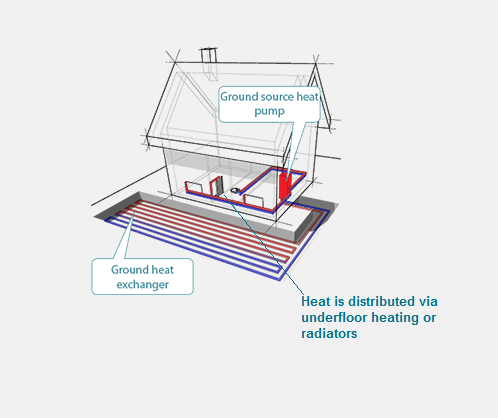As winter approaches in the southern hemisphere, many families will be thankful that they have installed a hydronic heating system in their home. Hydronic heating is a safe, flexible, economical and comfortable way to heat a home. A hydronic heating system warms your home by circulating hot water through radiators or pipework in your floors or ceilings.
With traditional or forced hot air systems, the hot air quickly rises to the ceiling and collects or stays there. This results in residents having a hot head and cold feet. However, with a hydronic system, heat is evenly distributed so there are no drafts or hot and cold spots. By radiating heat through a sealed system it will keep your home cleaner—and you and your family healthier—since there is minimal movement of allergens and dust particles. Finally, when compared to forced hot air systems, hydronic heating systems tend to be quieter since there is no noise coming from the air moving in ducts as well as the absence of loud blowers or large motors.
Traditionally, hydronic systems heated water through combustion of coal, oil, wood or gas, while air to water heat pumps and solar thermal (not to be confused with solar PV) are also options. However, geoexchange systems using a water to water Ground Source Heat Pumps (GSHPs) can also power a hydronic heating system.
Geoexchange (or geothermal heating systems) generate energy from the relatively constant temperature of the shallow earth. Simply by circulating water through the Ground Heat Exchanger (GHX), a geoexchange system sources up to 80% of the thermal (heat) energy delivered into your home. A geoexchange system is more efficient, more eco-friendly, more durable and more reliable than the alternatives.

True to our LEAF Design Philosophy, which takes into consideration the bigger picture in system design, a geoexchange system is the perfect compliment for your hydronic heating system. Here are the top reasons and benefits in powering your hydronic heating with geoexchange:
7 Benefits of Powering Your Hydronic Heating with Geoexchange
1. Liveability
A geoexchange powered hydronic heating system takes comfort to a new level. High level temperature control, even distribution of heat, flexible zoning options that meet your needs…the list goes on.
2. Efficiency
Geoexchange systems have heating efficiencies that are more than 50 percent higher than other heat pump systems. They will efficiently generate heat from the ground to power your hydronic heating system any time of the year. Combine that with the efficiency benefits of thermal mass from your hydronic heating system and high power bills can be a thing of the past.
3. Acoustics / Aesthetics
No wall mounted split units, no noise, no outdoor plant, no ventilation systems, no grills or registers. Even the thermostats and zone sensors can be located discretely or be a barely observable item.
It is time that design elements and art or photo collections were the internal and external features of your home and not the heating, cooling and hot water systems.
4. Future-proof your home
The Ground Source Heat Pump in a geoexchange system is powered (very efficiently) by electricity. There is no need to expose yourself to the risk of increasing electricity and gas prices. The option now exists to remove yourself from gas (whether very expensive LPG or the natural gas network) or even the electricity grid, by powering the system with either your own renewable power or the increasing amount of renewable energy that is servicing the electricity grid.
5. Safety
Traditional heating systems, like boilers or furnaces, need to burn oil or gas to create heat. As such, you have to follow various safety precautions that need to be taken when using any gas burning equipment. For instance, you have to be aware of the possibility of CO leaks or of dangerous problems like delayed furnace ignition. Geoexchange systems, on the other hand, have no need for an external fuel source and there are very few safety precautions needed since there is no combustion.
6. Low Maintenance
Geoexchange systems require little to no maintenance. Even though the heat pump should be inspected once a year, the majority of components are underground and, as such, require little to no upkeep. When designed and installed properly, the GHX will last for decades.
7. Reliability
The buried GHX is constantly tapped into the thermal reservoir that is the ground. Thus, it is not impacted by extreme cold (air source heat pumps) or the absence of sunshine (solar thermal) that result in hidden costs associated with expensive electric element back-up systems.
